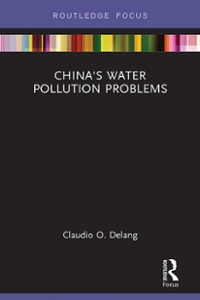Question
Which of the following would count as valid evidence against the efficient markets hypothesis? (a) Some investors make huge profits betting on specific stocks on
Which of the following would count as valid evidence against the efficient markets hypothesis?
(a) Some investors make huge profits betting on specific stocks on the stock market.
(b) Financial crises still occur.
(c) Stock prices always rise two days after good news are released.
d) Stock prices are very volatile.
(e) A company's stock price does not always rise with good news about that company
Which of the following bonds has a highest yield to maturity?
(a) A 1-year bond with a face value of $110, a coupon of $20 and current price $100.
(b) A bond that pays a fixed coupon of $10 forever (perpetuity) and current price $100.
(c) A 1-year zero coupon bond (also called Discount Bond) with a face value of $120 and current price $100.
(d) A 1-year bond with a face value of 100, a coupon rate of 10% and a current price of $100.
Consider two bonds x and y, both with face value 100, coupon rate 10%, and maturity of 1 year. Assume that the interest rate is 10%. Assume that bond y will go into default on both the principal and interest payments with probability 50%. Suppose that prices equal the expected discounted payments.
What is the difference in the yields to maturity?
(a) The yields to maturity are the same.
(b) 110.
(c) 120.
(d) 10.
(e) 12. 25.
According to the expectation theory of the yield curve, relatively high long-term yields mean (a) that current short term yields are perceived to be above a "normal" level.
(b) that future short term yields are expected to decrease.
(c) that current long term yields are perceived to be above a "normal" level.
(d) that future short term yields are expected to increase.
You believe that a corporation's dividends will grow 5% on average into the foreseeable future. The company's last dividend payment was $5. You require a rate of return of ke = 12%. How would you calculate the current price of the stock?
(a) Using the Gordon Growth model;
b) Using the one-period valuation model;
(c) Using the Generalized Dividend Valuation Model;
(d) Using non of the above.
Consider a stock that pays a year-end dividend of $2.00 and has an expected sales price of $103. Suppose you require a rate of return of ke = 5%. How would you calculate the current price of the stock (you'd be ready to pay)?
(a) Using the Gordon Growth model;
(b) Using the one-period valuation model;
(c) Using the Generalized Dividend Valuation Model;
(d) Using non of the above
Step by Step Solution
There are 3 Steps involved in it
Step: 1

Get Instant Access to Expert-Tailored Solutions
See step-by-step solutions with expert insights and AI powered tools for academic success
Step: 2

Step: 3

Ace Your Homework with AI
Get the answers you need in no time with our AI-driven, step-by-step assistance
Get Started


